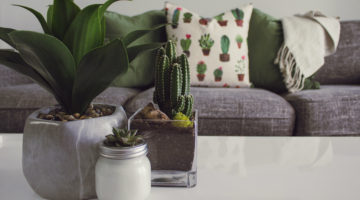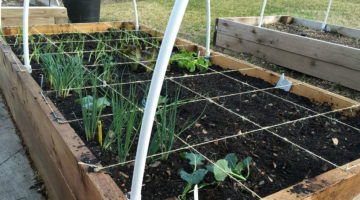 T5 grow lights are efficient light sources that can be used for wide range of plant growth starting from seedling and vegetative growth to flowering or budding phases. But T5 lights have one big disadvantage in that they need to be mounted horizontally overhead or vertically on the sides of any grow room or environment. This in fact creates a conundrum as the bulbs themselves disperse light all over the room and only 1/3 or 1/4 of the overall light gets to your plants directly and the rest is scattered and loses its power. This is why many grow lights are created with reflectors mounted on top of them that collect the rest of the light and directs it downward to where your plants are growing. But because there are various standards and different manufacturers, then each of these reflectors is a little bit different and every manufacturer says that their product is the best but no one states how their reflectors differ or how they achieve their stated values of 99% reflection.
T5 grow lights are efficient light sources that can be used for wide range of plant growth starting from seedling and vegetative growth to flowering or budding phases. But T5 lights have one big disadvantage in that they need to be mounted horizontally overhead or vertically on the sides of any grow room or environment. This in fact creates a conundrum as the bulbs themselves disperse light all over the room and only 1/3 or 1/4 of the overall light gets to your plants directly and the rest is scattered and loses its power. This is why many grow lights are created with reflectors mounted on top of them that collect the rest of the light and directs it downward to where your plants are growing. But because there are various standards and different manufacturers, then each of these reflectors is a little bit different and every manufacturer says that their product is the best but no one states how their reflectors differ or how they achieve their stated values of 99% reflection.
Why are reflectors needed?
Because T5 lights are basically long glowing tubes they give off lights in all directions and that is not efficient if you cannot direct all that light to the direction where your plants are growing. This is the sole purpose of reflectors as they are manufactured with materials that do not absorb light but reflect as much as 99% of the total light output from a bulb. Reflectors are also great for shielding your lights form weather conditions and some falling objects as they are usually mounted on top of the light bulb itself.
Reflector drawbacks
As we know by now reflectors are great with giving your garden more light by concentrating the light output just under the fixture but there are also some drawbacks like additional costs and weight that you need to consider before buying your T5 grow lights. Basically reflectors are not that expensive but if you have a lot of lights that need reflectors then fitting each one with a reflector can become expensive. But usually if you are buying large scale growing equipment reflectors are included or built into the fixtures themselves.
Another thing that may be a problem is the weight as each additional peace that you add to your lights will give additional weight that will need to be held in place from the ceiling. Weight could become an issue if you would use a lot of heavy reflectors but because most of them are made from aluminum or Mylar then usually this is not a problem.
But what could become a major problem is hotspots that form from cheap and poor quality reflectors that are not tested in real growing conditions. Because these reflectors usually reflect up to 3 times more light to your plants they can have very powerful effect on the growth and if there is a defect on the reflecting surface then your plants could get burned by too much light reflected in one spot just like a magnifying glass.
And the last part that could make reflectors bad for your growth is the fact that they will increase the heat around the bulb. If your grow room environment is hot then this can reduce the bulb lifespan as T5 lights usually work most efficiently from 25 to 32 degrees Celsius.
T5 light reflector materials
T5 bulb reflectors come in various materials but the basic requirements for those materials is that they need to reflect as much light as they can which means the selection of materials is very narrow. On the most modern reflectors there are just two main materials used for the reflecting purposes and they are:
Mylar – Mylar is a brand name for specific polyester stretched film sheet that is also known as BoPET. It reflects anywhere from 90 to 98% of the light that shines on it so it can be used for reflectors.
Aluminum – Aluminum or element AL is a metal or chemical element and it is the third most abundant element in the world. Aluminum film is a great reflector and can reflect up to 92% of the visible light and that is why aluminum is used in most reflectors
Reflector shapes
Reflectors are very dependent of their shape as the shape will be responsible for the amount of light that will be directed back to your plants and also for the intensity and spread of that light. And that means that you need to have different shaped reflectors for different situations. Here are your choices:
Wing shaped reflector – Wing shape reflectors are one of the most well known reflectors that are a one half circle reflectors spanning the whole bulb. This reflector has a great light concentration properties and it also is very easy to manufacture so they are much cheaper than other reflectors.
Double wing(half -circle) reflector – Double wing reflectors are almost the same as wing shaped reflectors but they consist of two half circles one on each side of the light creating a bird like structure that disperses light very broadly and is mainly used for larger grow rooms and stronger lights.
Box shaped reflectors – A box shaped reflector usually is used when you need to have a very strong and concentrated light as this shape will not allow any light do escape but it is also a bit bulky and heavy.
Triangle reflectors – Triangle reflectors are made from two distinct reflective surfaces that are bound together in a 45 degree angle. However, these reflectors are not that common and can be seen only in some small scale grow rooms.




